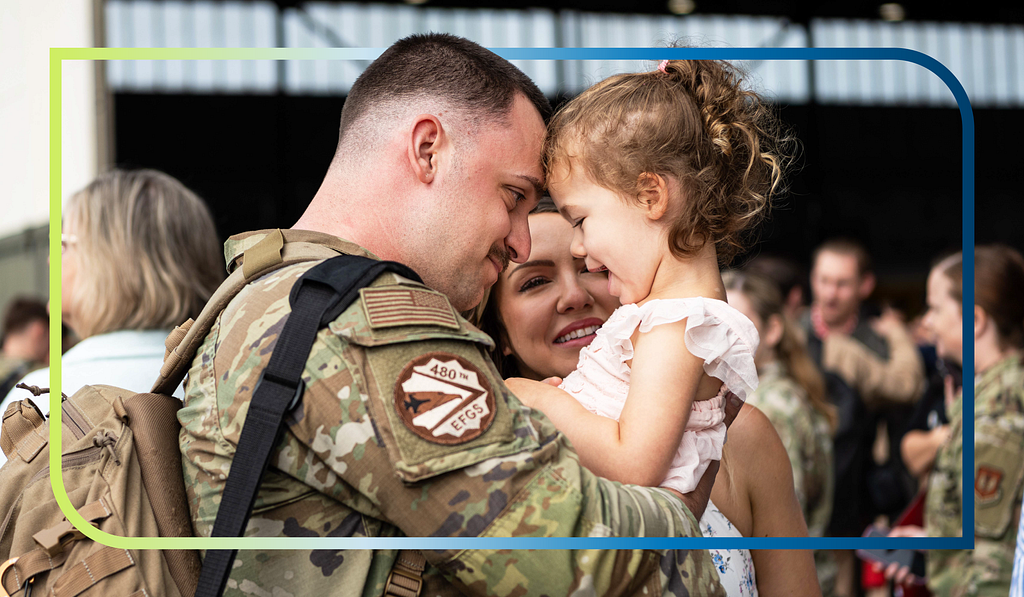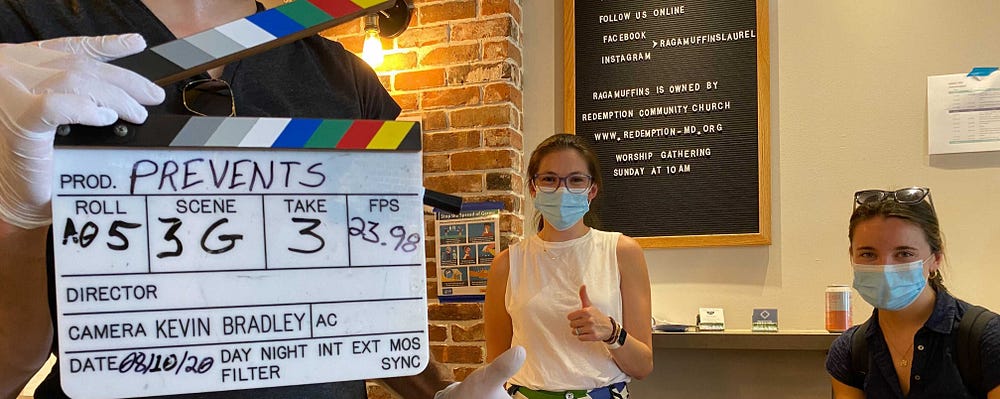
DCGers’ commitment to preventing Veteran suicide inspires new creative process
PREVENTS team members produced a PSA and an educational video series
DCG’s PREVENTS team members recently completed the production of a professionally produced video series — coming soon to your screens! To learn more about this exciting project, Creative Director Chris Lynch interviewed Taylor Grant and Emily Hawthorne, two graphic designers involved in every phase of the process.
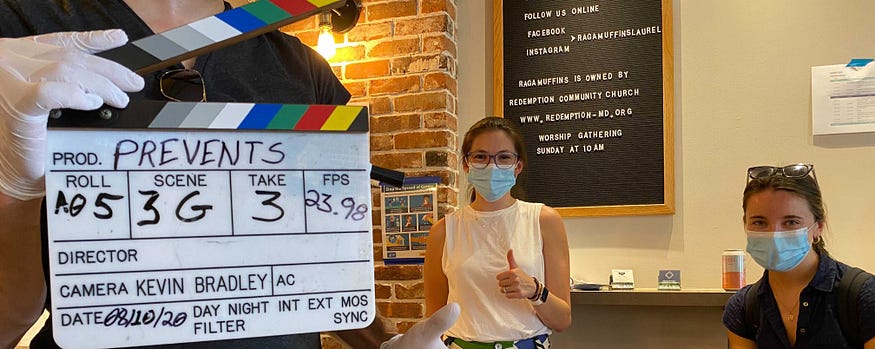
What project are you working on?
E: REACH is the largest national public health campaign dedicated to suicide prevention. As designers on REACH, it’s our job to disseminate critical — though sometimes heavy — information in a way that both educates and engages the general public.
Why did you decide to produce videos?
E: In public health communications, we rely on evidence-based theories to ground our strategies — audiences are more empowered to engage in healthy behaviors when they see characters they relate to demonstrate such behaviors. There are actually many public health experts that help scriptwriters behind the scenes of our favorite TV shows!
We know that talking about suicide can be awkward and feel intrusive. However, we also know that when we talk about suicide openly and honestly, we can help prevent suicide. There are so many ways we can REACH out every day, both to people we know may be suffering and those who may appear to be doing okay.
Why is this a unique assignment?
T: DCG has never before completed the production of a video on this large of a scale. The project became even more unconventional with the filming taking place under Covid-19 restrictions!
… but you’re graphic designers — how did working on videos go?
E: Even though we are graphic designers, I think we both consider ourselves artists in general, as well. We each did a little video work when studying art in college, but this was definitely a great opportunity to learn much more. These videos all started with an idea … it has been amazing to see that initial idea come to life now that the videos are complete. Chris, your experience directing and producing videos in the past was really critical in helping us develop the vision and execute all the components.
T: Dreaming up the characters and their stories was creative writing and strategy. In the early stages, it wasn’t as visual as what we normally do as graphic designers but creating people that have relatable stories and suicide risk factors felt like a natural extension of our usual creative outlets.
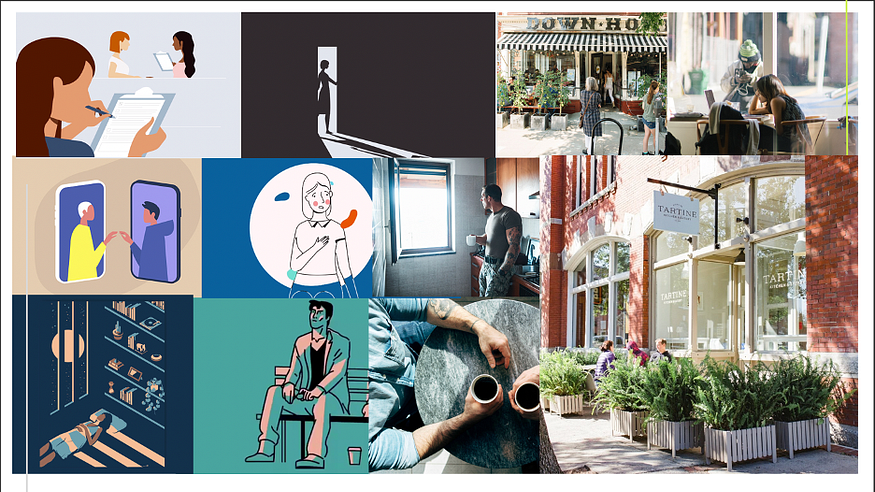
Did you use anything to inspire the video?
E: We wanted the videos to be realistic, so we drew from our own experiences. Larry’s character is based on an older World War II Veteran I know. I was a middle school teacher for a few years — that really helped me understand what our teenage character may be dealing with and how teachers can step in to offer help.
T: We did our best to step into the shoes of our characters and really see and feel things from their perspectives. Emily’s experience as a middle school teacher certainly helped us frame the anxieties and pressures a teen might feel. For me, as a military spouse, knowing some of the nuances of active-duty service member behaviors was helpful in creating “Jennifer” and imagining her transition to civilian life. Additionally, having lost my parents, I could easily understand the strain on “Larry” and his son “James’” relationship and the eventual conversation they have when they decide to reach out to each other.
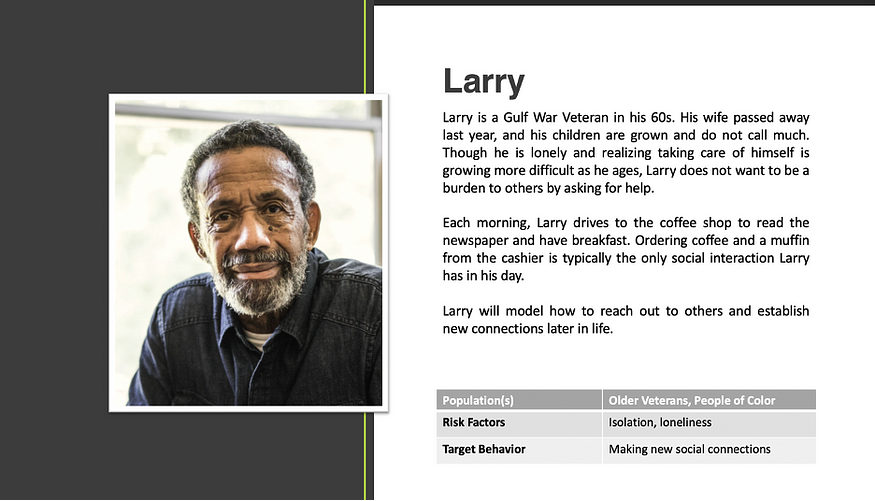
What was your favorite part of the process?
E: I think for me, the character development writing process was the most fun. I loved being able to really make a profile for these characters and turn them into real people for audiences to relate.
T: I really enjoyed the casting process. When we were watching actors bring the characters to life in their audition tapes, I felt like we had made characters that even the actors could empathize with and that these videos were really going to resonate with people so they could understand that everyone has risk factors.
What were some of the challenges you faced?
E: Time! Though we wrote lengthy scripts to start, our final scripts ended up being around ¼ of the length. We were also working under a tight timeline — but thanks to coffee and our DCG team’s help, we kept the deadlines on track.
T: Yes, definitely time. We learned that conversation or spoken storylines took a lot longer to establish, and visual cues were much more efficient in building important details. Even so, I really enjoyed the creative process around establishing parts of the story with visual cues rather than the script. In the original (and very long) scripts, we had a lot of sentimental details about “Larry” looking through his son’s old books and fiddling with his wedding ring when thinking of his late wife. These didn’t ultimately end up in the final versions mostly because of Covid-19 and not being able to film in multiple locations, but also because we had to get right to the point.
Was anything particularly surprising about the process?
T: There were a lot of surprising things, but mostly because this process was new to us. We partnered with a production company called Greenbuzz that specializes in this type of project. We learned a lot from their expertise about setting the tone with lighting and fog, framing shots with tree branches, even boosting engagement by avoiding some tactics and bringing in others. Of course, we also weren’t expecting to be making a Covid-19 compliance plan when we dreamed up our characters and the coffee shop setting. When we fully understood how Covid-19 would affect live-action production, Greenbuzz really covered all the bases in developing a plan to keep everyone safe while filming.
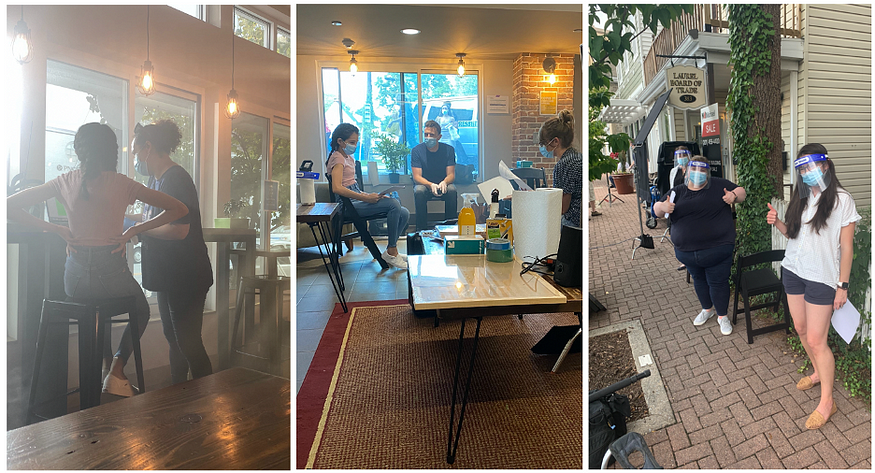
Would you want to work on another video?
E: For sure! It’s really exciting to see some of the shorter concepts we have already done make their way to TV, and I think these are even more meaningful for the public to see — especially right now. Working on the videos definitely makes me feel like we are speaking to Americans across the country about how they can help prevent suicide.
T: Yes, and we have. Since imagining the concepts for these videos back in June, we have created a lot of video content for the REACH campaign. Video has become a fairly sizable part of our creative deliverables lately. Nothing quite as big in scope as this set of videos, but we do have plans to create more video pieces in the next year.

Where can we see the videos?
E: The PSA will make its way to TV soon! The full version will be used for other advertising efforts (hint: YouTube masthead, Facebook, and maybe more). All videos will also live on REACH.gov so anyone can access anytime!


